Giant in hand: a review of the ASUS ZenFone 3 Ultra smartphone
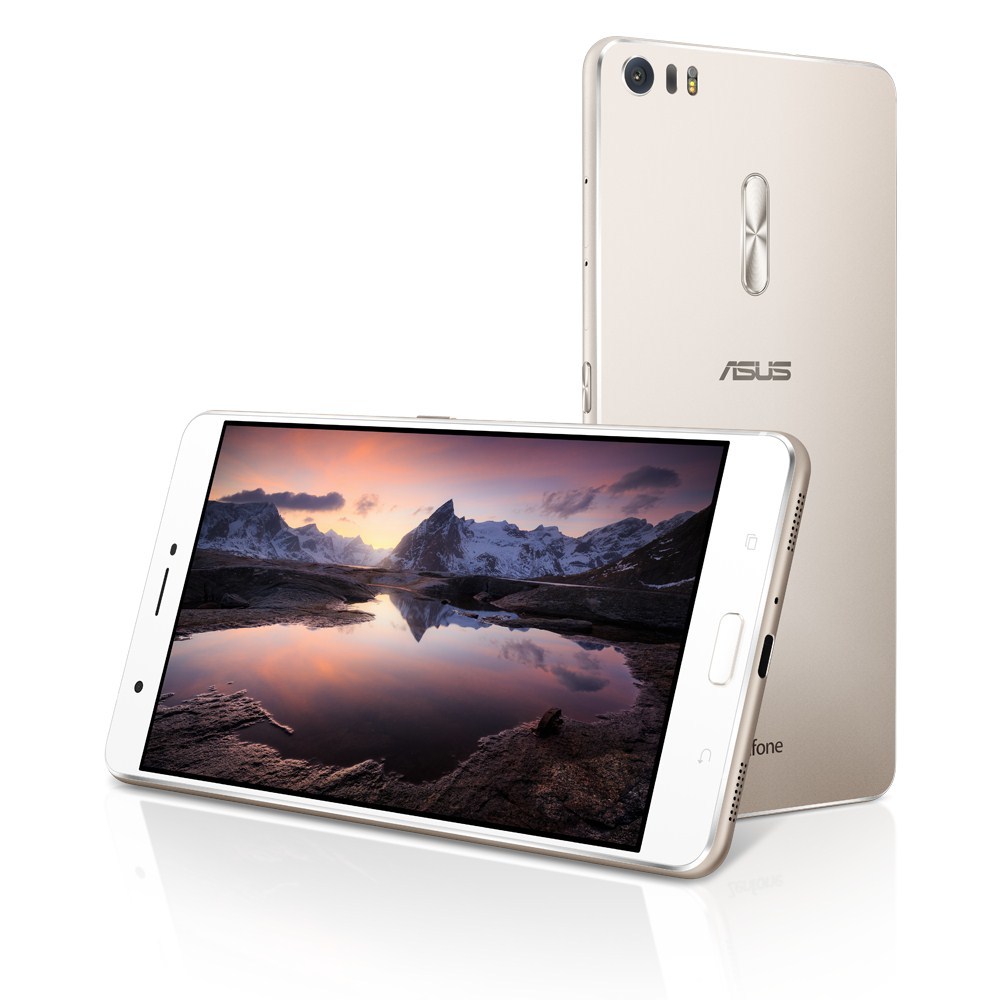
We continue to talk about new products in the line Zen. The first was described ZenFone 3 smartphone, recently - ZenBook 3 ultrabook , and the hero of this review was a smartphone (or rather a phablet?) ZenFone 3 Ultra (ZU680KL).
Specifications
Processor : 64-bit eight-core Qualcomm Snapdragon 652, 1.8 GHz
Graphics : Adreno 510, ASUS Tru2Life + video processor
Display : 6.8-inch, FullHD (1920 x 1080), IPS, with full-screen lamination.
RAM : 3/4 GB LPDDR3
Built-in memory : eMMC 32/64/128 GB
Memory card slot : Micro SD (SDXC) up to 2 TB
Battery : 4600 mAh lithium
Fast charging BoostMaster: from 0% to 60% in 45 minutes (18 W)
Audio :
Two five-magnetic dynamics.
Technology ASUS SonicMaster 3.0.
Virtual surround sound in 7.1 format (DTS Headphone: X technology).
Audio support in 192 kHz / 24 bit format.
Amplifier NXP Smart.
Wireless :
802.11a / b / g / n / ac
Bluetooth V 4.2 + A2DP + EDR
Navigation : GPS / A-GPS / GLONASS / BDSS
SIM card :
Support for two SIM-cards in nano SIM format.
You can use either a nano-SIM card or a Micro SD card at the same time.
Both SIM card slots support 3G WCDMA / 4G LTE standards, but only one of the SIM cards can connect to the 3G WCDMA / 4G LTE network, and not two at a time.
Data transfer :
HSPA +: feedback - 5.76 / reception - 42.2 Mbps
LTE Cat6: feedback - 50 / reception - 300 Mbps
Connectors :
USB Type C 2.0
3.5 mm audio jack (headphones and microphone)
Miracast
DisplayPort support
Cameras :
Frontal: 8 Mp, f / 2.0 aperture, angle of view 85 °
Primary: 23 megapixels, f / 2.0 aperture, 6-element lens, TriTech triple autofocus for 0.03 s, shutter speed up to 32 seconds, 4-axis optical image stabilization (4 steps), TriTech triple autofocus system, two-color LED flash.
Video :
4K video.
Three-axis electronic image stabilization.
Power supply :
Output: 9 V, 2 A, 18 W
Input: ~ 100-240 V, 50/60 Hz
Accelerated charging technology support
Dimensions : 186.4 x 93.9 x 6.8 mm
Weight : 233 gr.
AnTuTu specifications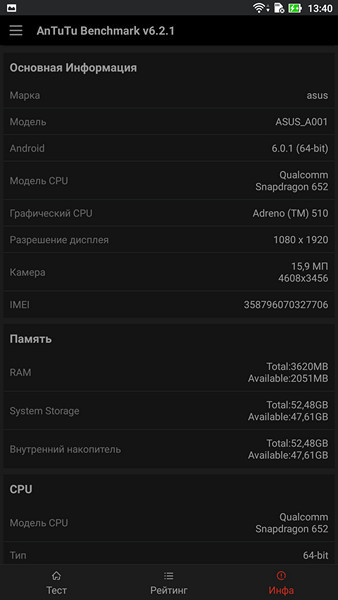

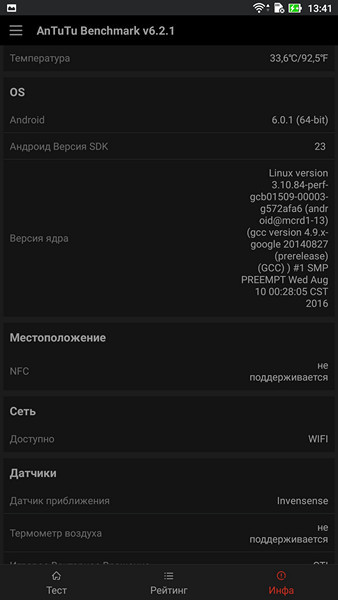





Appearance and equipment
ZenFone 3 Ultra is positioned as a top smartphone in the updated line of Zen. True, to call it a smartphone already the language does not turn, but more on that below. So, the status of the model in this case is already underlined by the packaging itself. A large box of an unusual format for smartphones opens like a box.
')



Included with the smartphone comes charging under the USB Type C 2.0 connector, as well as a headset.
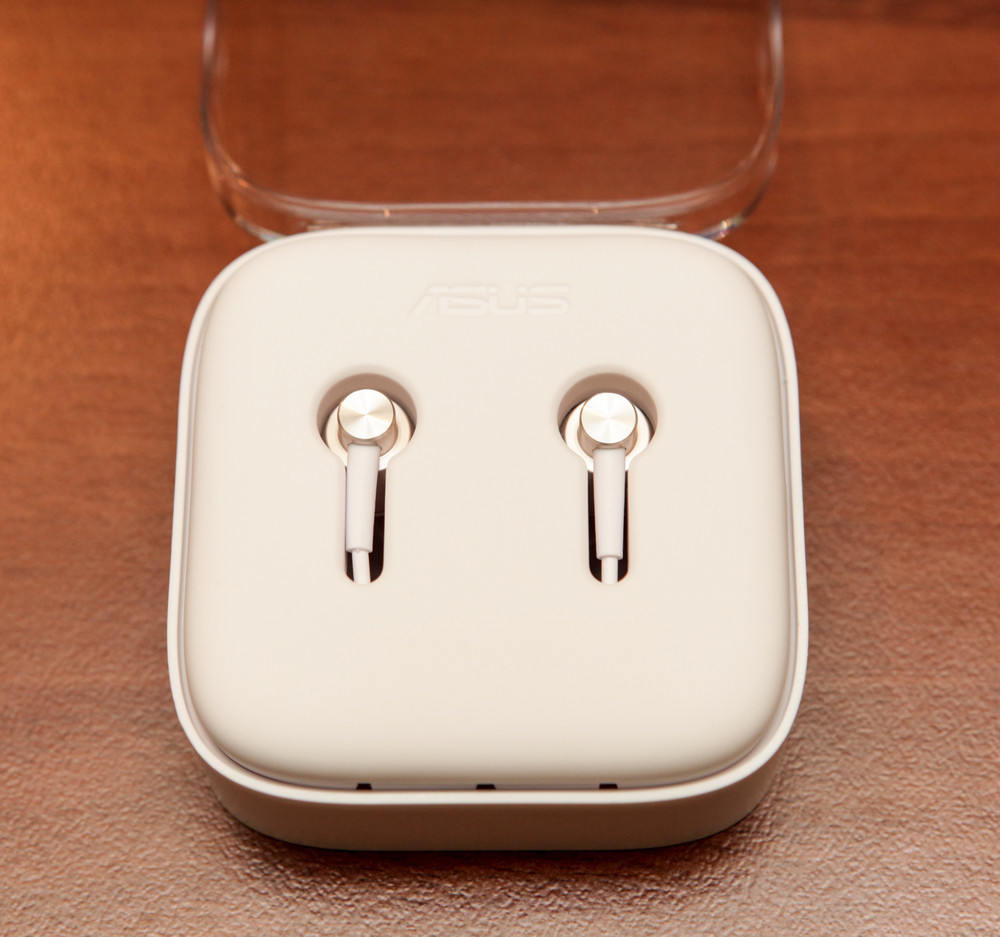

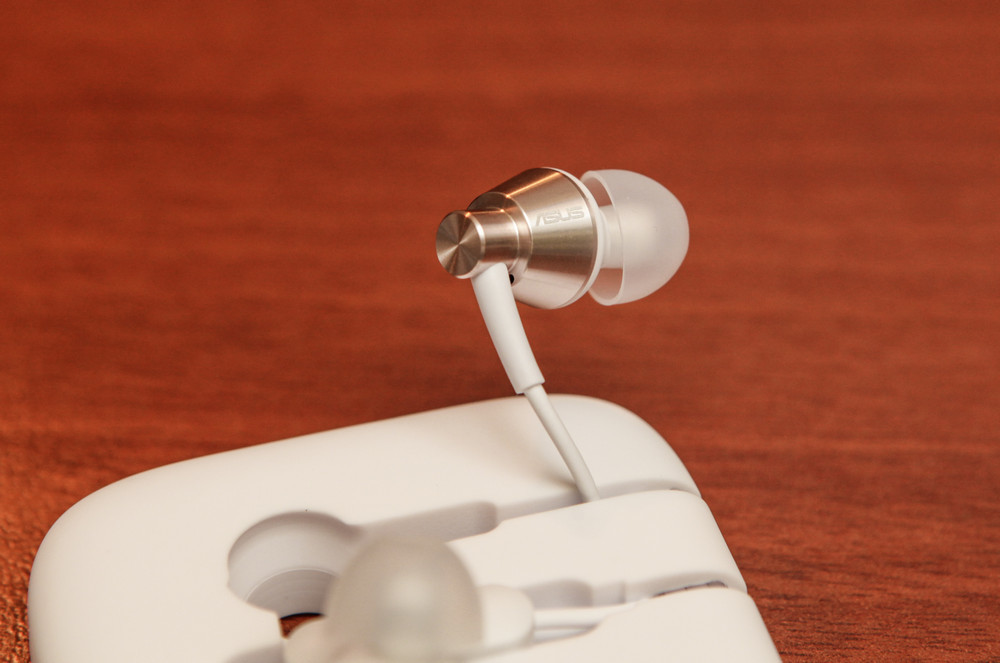


The review was a version of a sort of golden-pink color. Also on sale will be gray and silver versions.

The volume buttons are placed on the back wall, and in the corner are a compactly located camera, a laser focusing system, an RGB sensor and a two-color flash.
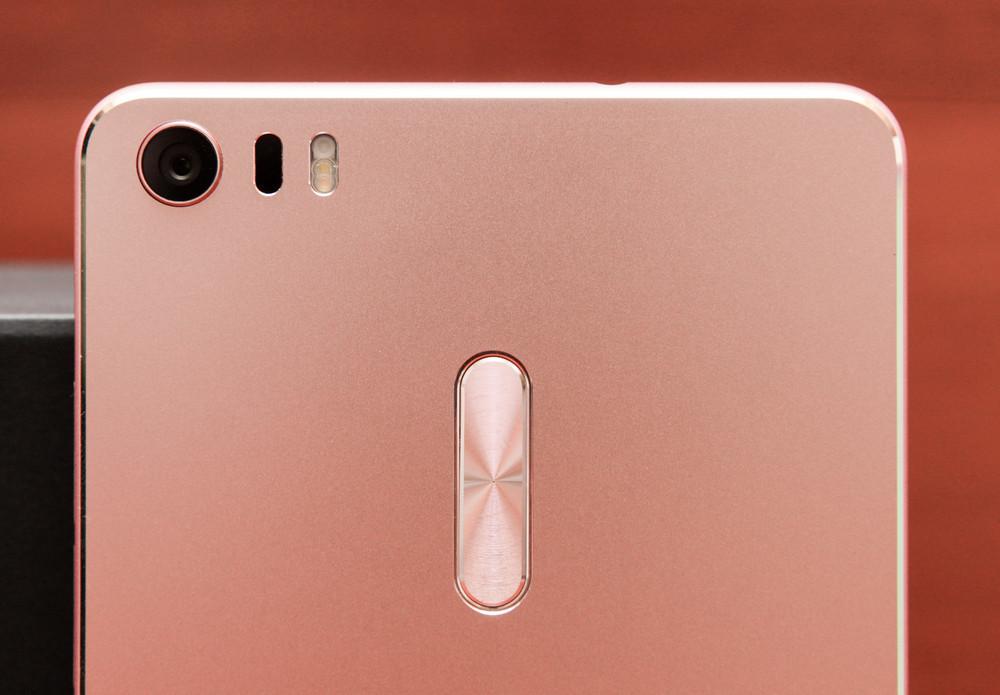
At the top there is an audio jack.
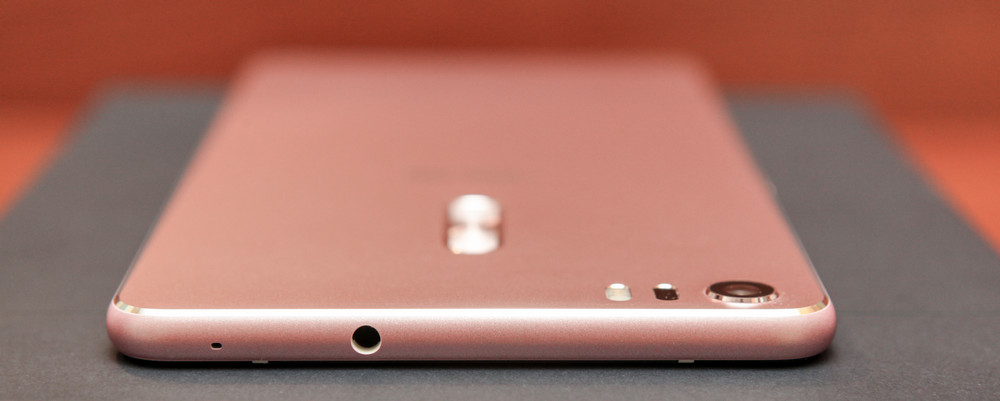
And on the bottom - two speakers and a USB Type C 2.0 connector that allows you to display images on monitors that have a DisplayPort interface.
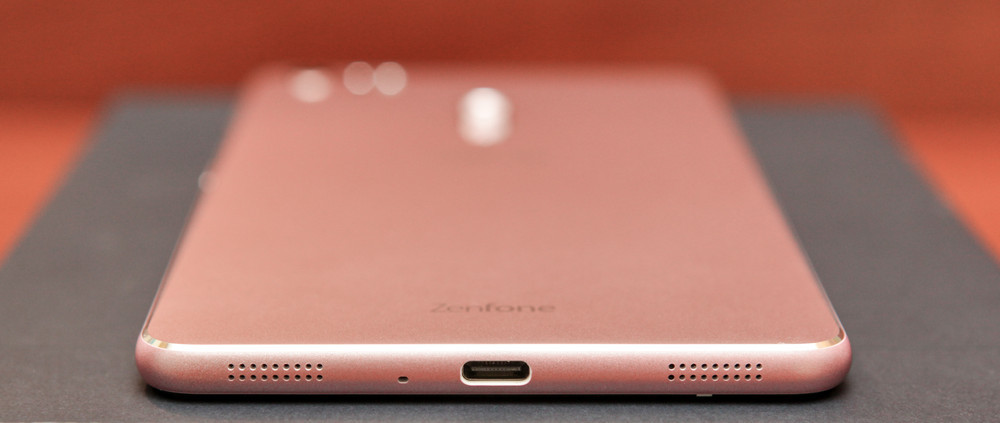
On the right is the power button and trays for SIMs and memory cards.

The left side is completely clean.

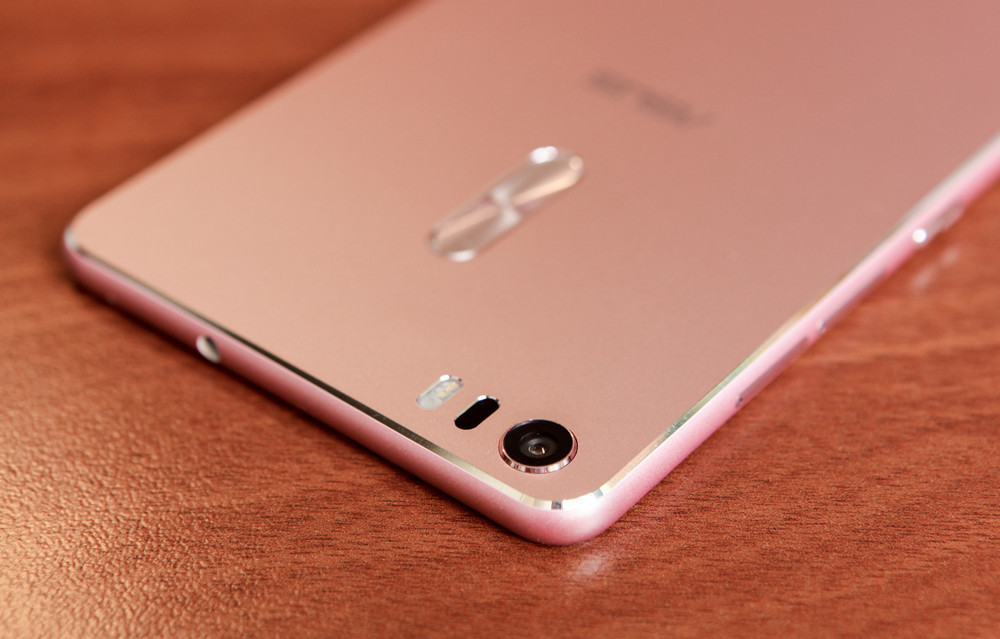
A hefty screen occupies 79% of the front of the smartphone. Gorilla Glass 4 is used as a protective glass.
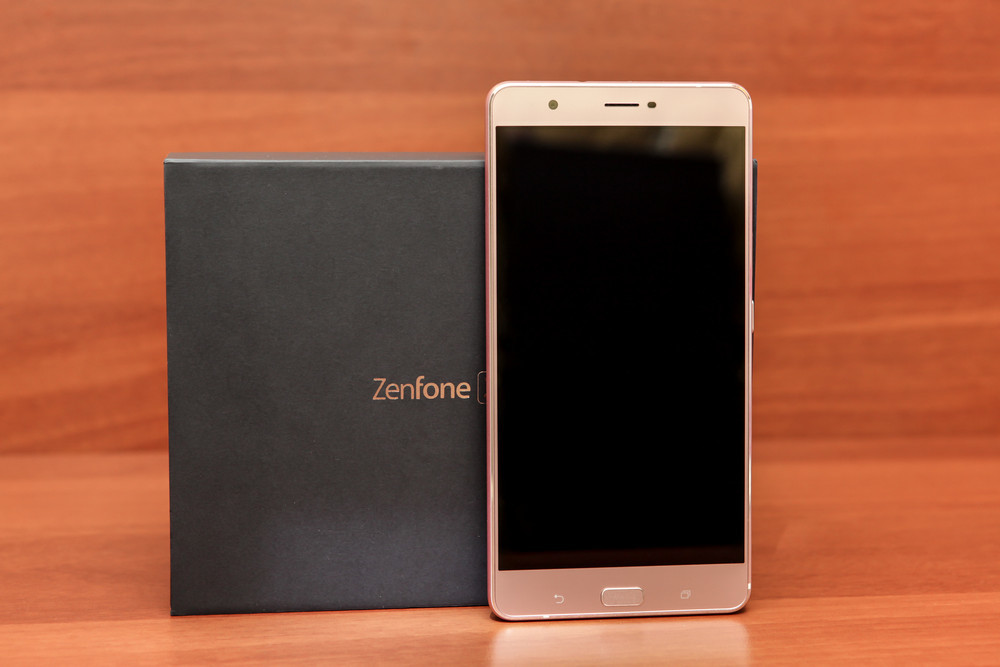

The home button is made exactly by the button, and not by the sensor zone. And the button, slightly protruding above the surface.

I think this is done so that you can immediately find it by touch - the button is also a fingerprint scanner. That is, ZenFone 3 Ultra can be unlocked without passwords and drawing pattern keys. At the same time, and you can use the device only.
And now about the size of the smartphone. He is huge. Therefore, I would refer him to the class of phablets. I have a medium-sized hand, but even I hardly clasped the case. For comparison, I took a picture of the ZenFone 3 Ultra alongside not the smallest ZenFone 2 Laser either:

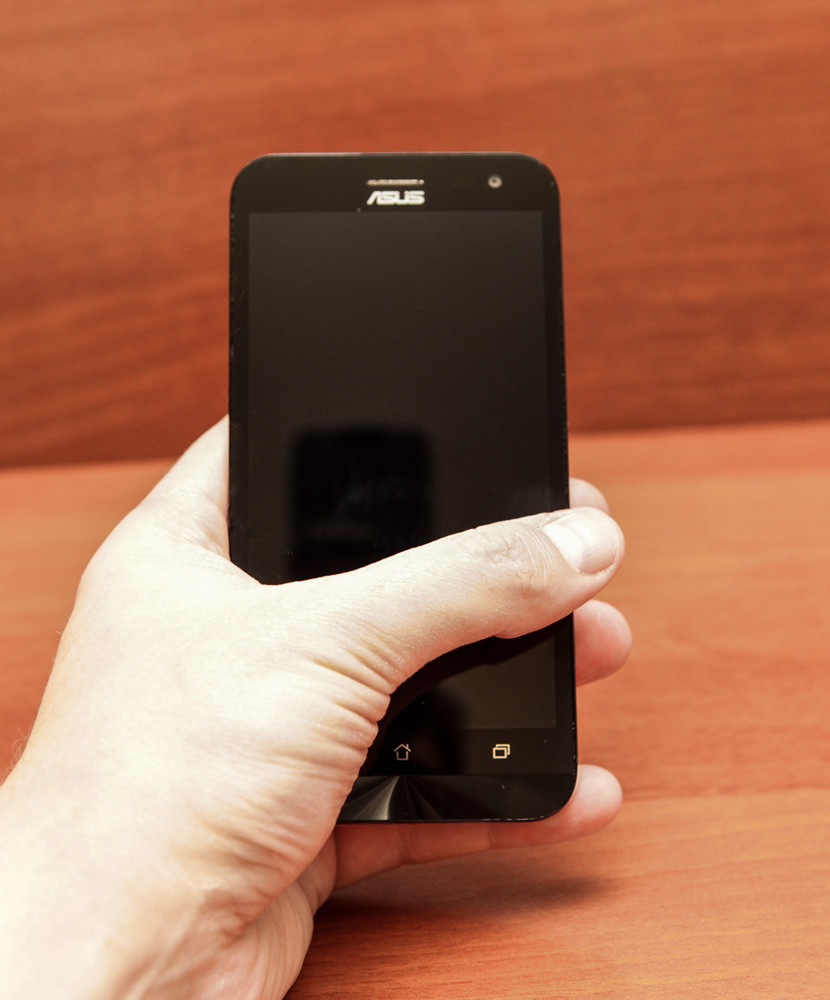
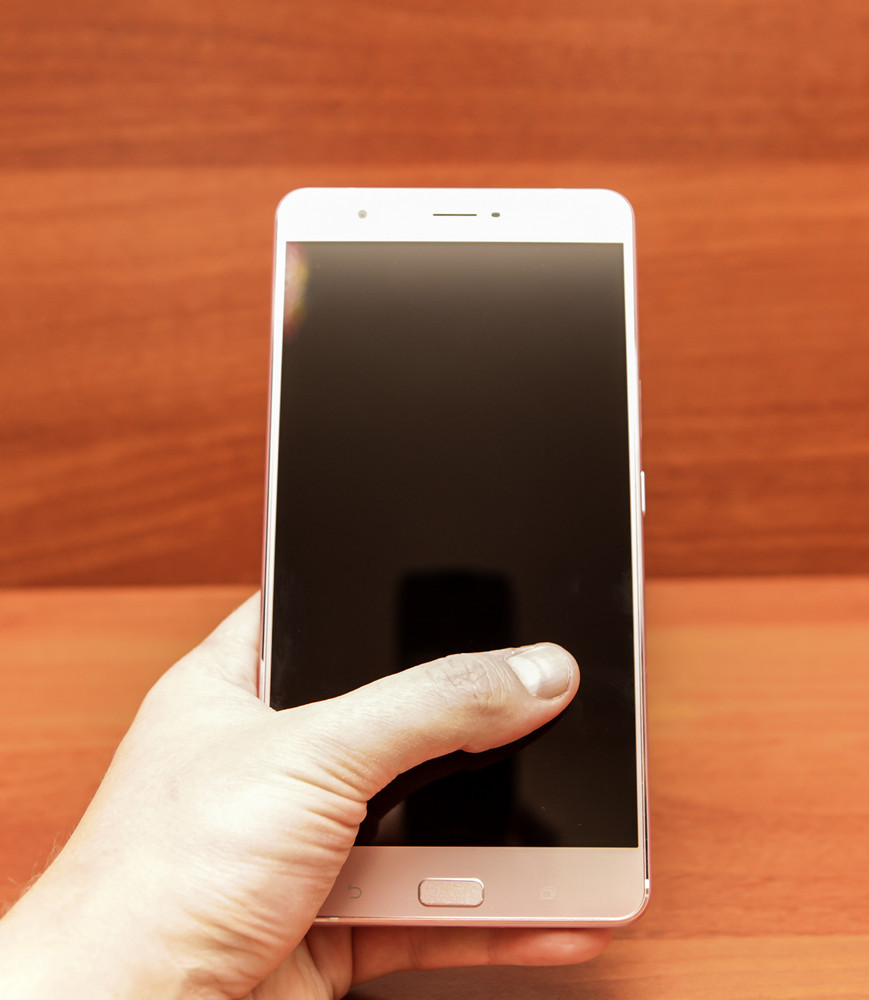
As you can see, neither the thumb nor the others, I do not reach the edge of the smartphone. By the way, the weight of ZenFone 3 Ultra is solid, it feels very weighty in your pocket.
It is possible that someone has already noticed that there are no dielectric or plastic inserts on the body of the smartphone. It is really all aluminum. A reasonable question arises: how then did you manage to bypass antenna shielding? ASUS does not disclose this information. Perhaps, the signal is received through the front panel:
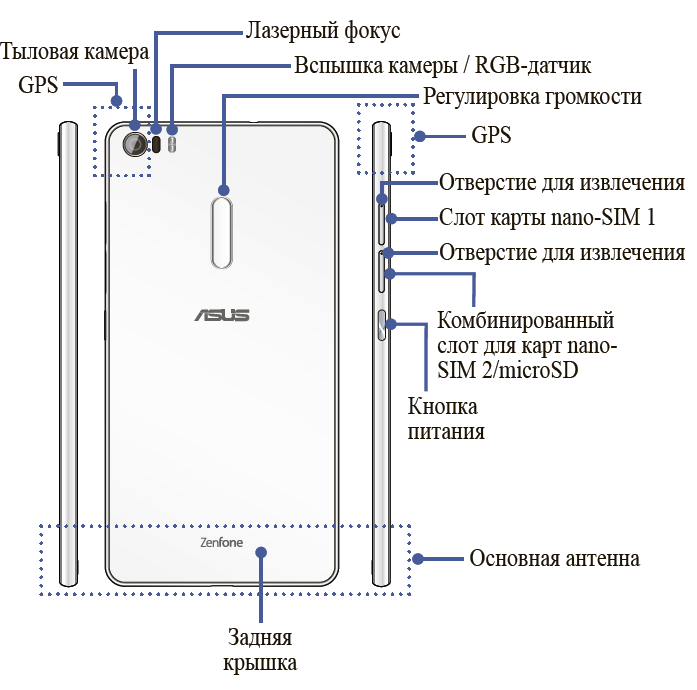
Also, the role of radiotransparent windows can play these three inconspicuous inserts:
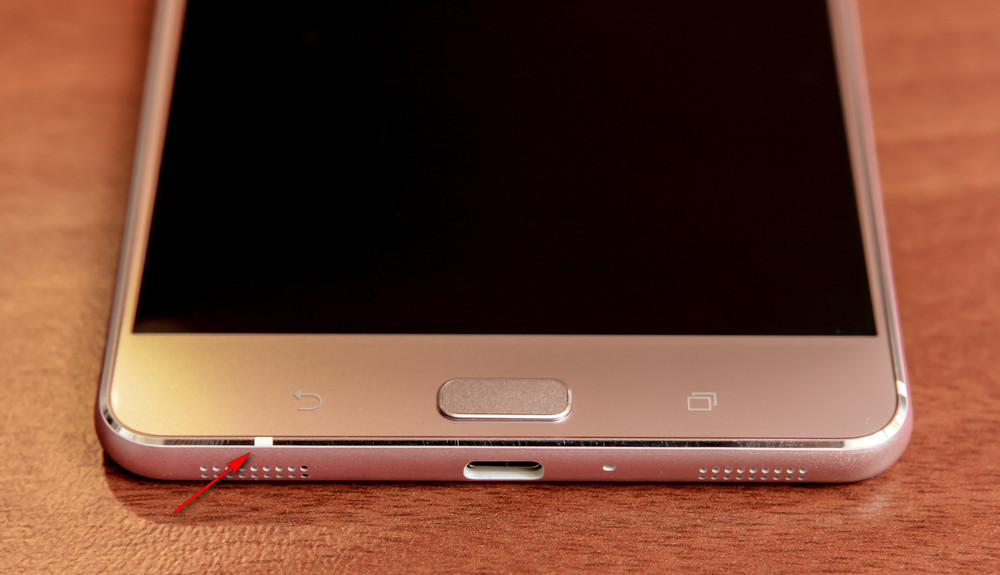
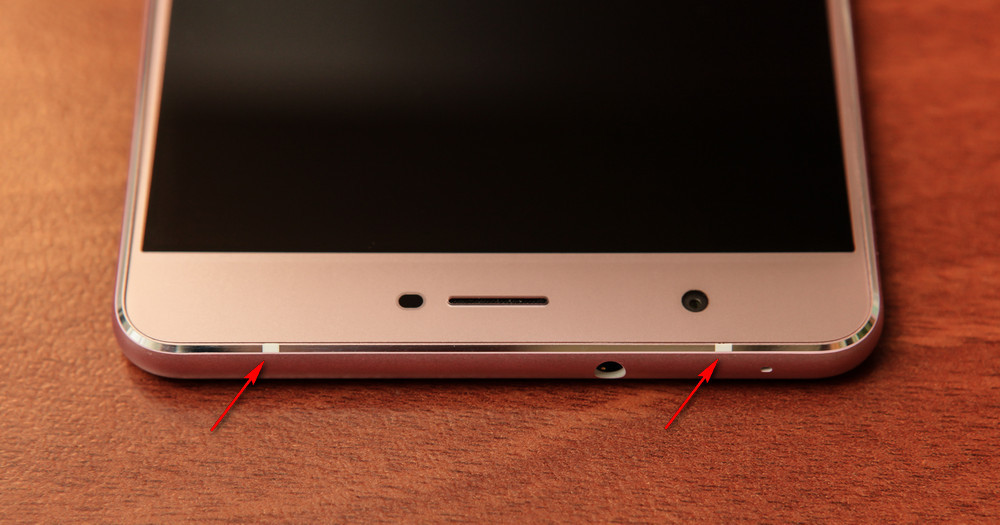
Although it is more likely that they are used to disassemble the device in service workshops. Too small size for antennas.
Display
The display diagonal is 6.8 inches. It is built on an IPS-matrix with Full HD resolution. The pixel size is so small that the image looks completely smooth. The color rendition is very good, the brightness margin is quite large (400 cd / m2), on a clear sunny day I did not have to strain my eyesight much. As mentioned above, the entire front side is covered with sturdy Gorilla Glass 4. An important advantage, given the very large display area.
Sound
ZenFone 3 Ultra is equipped with two five-magnetic speakers. He plays quite nicely and really loudly, although one doesn’t have to wait much from such kids. I wondered what he could give to the headphones. Still, the sound format declared 24 bits / 192 kHz. Of course, my ears are far from audiophile - Sennheiser HD 215 - but even on them I could feel the sound quality. Subjectively, ZenFone 3 Ultra plays music much more detailed and cleaner than the integrated sound on my motherboard ASRock Z97 Extreme 3.
Another important feature of ZenFone 3 Ultra is the use of DTS Headphone: X surround sound technology. In this case, implemented 7.1-channel sound. Advanced on-the-fly algorithms process music recordings, movie audio tracks, and sound tracks of games, creating the illusion of volume, or enhancing the already existing volume effect. DTS Headphone: X managed to “refresh” not even the highest quality recordings with a bit rate of 128 kbps. The best effect is achieved when the sound source and headphones initially support the DTS Headphone: X. If you have good overhead headphones, then you can get a very distant (!) Idea of the capabilities of this technology from this demo . True, this will turn out far from any combination of “sound card / headphones”. So the best option to evaluate the DTS Headphone: X is to come to the store and listen to the ZenFone 3 Ultra itself. For maximum effect, be sure to ask for the included headphones, as they support this technology.
Camera
The main camera uses a 23-megapixel (actually 22.5) Sony IMX318 matrix of 1 / 2.6 inches form factor. Aperture f / 2.0, maximum shutter speed - 32 seconds. The lens of 6 elements produced by Largan Precision. The camera uses 4-axis optical stabilization, which allows to reduce the exposure in 4 steps without the appearance of a wiggle.
Thanks to the huge screen, shooting on ZenFone 3 Ultra is more pleasant than on traditional-sized smartphones. Significant weight helps to keep the frame more confident, and even optical stabilization helps. When shooting video, only electronic stabilization is applied. To ensure correct color reproduction, an RGB sensor (color correction sensor) located above the flash is used. In addition, the quality of video output is enhanced by proprietary technology True2Life +, similar to the solutions used today in televisions. This is a set of software and hardware that is responsible for improving the smoothness of movement of objects on the screen, optimizing brightness, contrast and color reproduction.
An important feature of the camera ZenFone 3 Ultra is the presence of a triple autofocus system TriTech. For focusing at the same time using a laser sensor, as well as phase and servo autofocus. The manufacturer claims that the camera is able to focus in 0.03 seconds. For quiet shooting, it does not matter, but when you need to grab a moment, or when the subject is moving quickly, high-speed autofocus can be a decisive advantage. For example, if the tracking autofocus will work quickly and accurately, then when shooting a video, you will hardly have moments when you turned the smartphone, and the image became sharp with a great delay.
I must say that ZenFone 3 Ultra really never failed: among all the test shots there was not one with an erroneous focus. Yes, and when shooting, the camera was very responsive: it was necessary to touch some part of the frame, as the camera was immediately guided there and adjusted the exposure in accordance with the illumination of the selected zone.
One of the curious innovations was the function of "HDR in real time." If it is activated, the smartphone dynamically performs all the necessary calculations and in real time displays a picture of what the HDR image will look like. Damn convenient: now you do not need to waste time, first taking a picture, and then checking what happened.
Also for photography enthusiasts a manual setting of shutter speed will be useful, up to 32 seconds. When shooting at night, this allows you to get the popular effect of light strings from the headlights of moving cars. True, for this you will have to get a tripod and somehow adapt a smartphone to it.

At the same time, pay attention to the “Super Resolution” mode: the camera takes several pictures in a row and combines them into one image, the detail of which is equivalent to 92 megapixels.
Photo examples




The "low light" mode (resolution is halved due to the summation of signals from neighboring pixels):

Flash Night Mode:

Night mode without flash:


Original photographs (+ pictures in the “super resolution” mode)





The "low light" mode (resolution is halved due to the summation of signals from neighboring pixels):

Flash Night Mode:

Night mode without flash:


Original photographs (+ pictures in the “super resolution” mode)
Full HD video
4K video
Slow Motion Video
Software
ZenFone 3 Ultra runs on Android 6. It uses the traditional proprietary graphic shell Zen UI. Fortunately, recently ASUS are trying to minimize the load on the devices sold by all sorts of utilities. Although the ubiquitous xLink series of applications (PC Link, Share Link, etc.) are still there.
Performance
The smartphone is based on the Qualcomm Snapdragon 652 processor (64 bits, 8 cores), operating at frequencies up to 1.8 GHz. RAM - 3 or 4 GB. The built-in memory for programs and data storage can be 32, 64 or 128 GB. Also in one of the slots you can insert a Micro SD memory card. Please note that you can use:
- or two nano SIM cards (without a memory card),
- or one SIM card and memory card.

The integrated graphics chip Adreno 510 is responsible for processing graphics. There are no complaints about performance - everything flies.
Benchmark Results
Geekbench


3D mark
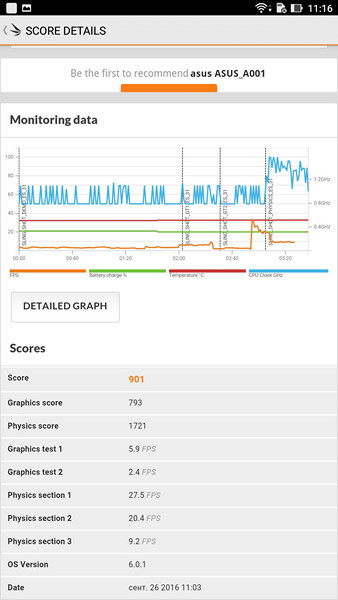
PC mark

Gfxbench


Vellamo
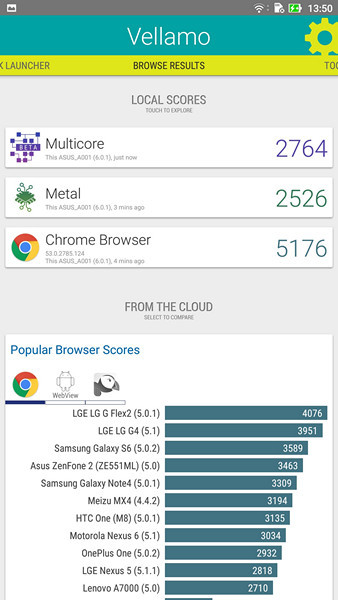


3D mark

PC mark

Gfxbench


Vellamo

Separately, I was pleased with the function of Power Bank. Since the ZenFone 3 Ultra has a rather big capacity battery - 4600 mAh, you can charge other gadgets from your smartphone if necessary. So to say, generously share energy reserves. To do this, just select the Reverse Charging Mode item in the shutdown menu, the smartphone will turn off, and after that you can connect other devices to it, just like a regular portable battery. This feature works at a charge level of at least 20%.

To return to normal mode, simply turn on the smartphone.
Supports fast recharging: in the first 45 minutes, the battery takes up about 60% of its capacity. As for the "longevity" of ZenFone 3 Ultra, then during the stress test PC mark it lasted almost 12 hours.
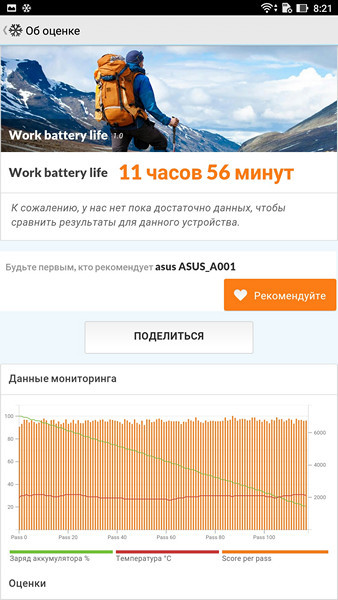
Conclusion
For all its merits, ZenFone 3 Ultra turned out to be a device far from all. There are two reasons for this - size and weight. To embrace it completely, you need to have a really big palm. In addition, because of its size, it does not fit in every pocket. Yes, and he significantly delays 233 grams. So this gadget is more for backpack carrying.
Who can advise him? Those who need not just a smartphone, but a multimedia device with wide capabilities. A powerful processor, a large amount of RAM and internal memory, a good camera, an excellent screen and sound at the level of quite good sound cards - for many people, ZenFone 3 Ultra can replace a tablet, greatly gaining in size. In addition, thanks to its camera, the smartphone will be for someone a replacement and a camera. Have you noticed on the streets of people who are taking pictures on tablets? Although the ZenFone 3 Ultra has a smaller screen, but it’s more convenient to hold it, including with one hand, and it greatly surpasses any tablet and the vast majority of smartphones in terms of photo and video capabilities.
On the 6.8-inch screen, it is convenient to watch movies, read books and play, much nicer than on 5-inch smartphones. The picture of ZenFone 3 Ultra is really tasty, and when you surf the Internet, you very quickly get used to the comfort of displaying websites on the big screen. After that, you look at the screens of ordinary 5-inch smartphones as postage stamps. As for sound, here for ZenFone 3 Ultra is generally difficult to find competitors. And even if you don’t like to play, then music in a new capacity really should suit your taste.
Recommended retail price: RUB 44,990 (4 GB of RAM, 64 GB)
Source: https://habr.com/ru/post/398351/
All Articles